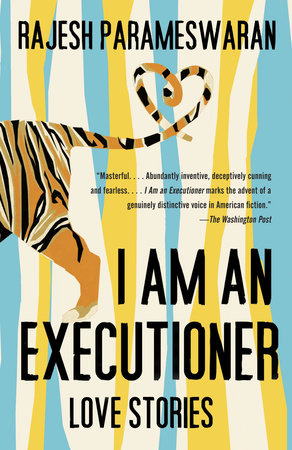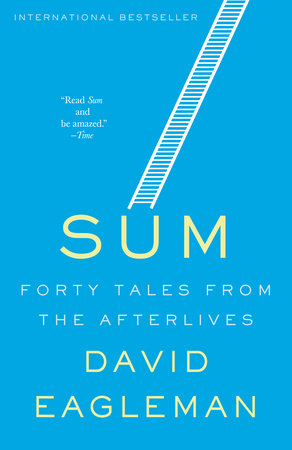When the going gets weird, I look to the weird to help me keep going.
The three women in my novel, I Keep My Worries In My Teeth, are all misfits. Ruth is a widow who steals photographs and hoards time because she’s trying to bring back her dead husband. Esther only understands the world when she bites it. While her dental proclivities make dating difficult they make her the most successful MouthFeel tester the pencil factory has ever had. Frankie is a teenage punk who secretly loves soap operas and only communicates in military code and tap shoes. These women didn’t start out as kooks but a town tragedy forces them to recreate their lives so they do what freaks and misfits do best—cleverly adapt in order to thrive in lousy situations.
tester the pencil factory has ever had. Frankie is a teenage punk who secretly loves soap operas and only communicates in military code and tap shoes. These women didn’t start out as kooks but a town tragedy forces them to recreate their lives so they do what freaks and misfits do best—cleverly adapt in order to thrive in lousy situations.
The word “misfit” implies the lack of a proper fit and while some people might see misfits as unfit, my novel and the following stories and poems prove the opposite. Through break-ups, housekeeping hacks, tiger teeth mishaps, extreme vowel restriction, and pestilence-based assignation attempts, these characters turn normalcy on its head. In the best of times, life is weird but especially right now, when everything feels all wrong, let these freaks and misfits make you feel all right.

Phyllis Diller’s Housekeeping Hint by Phyllis Diller
Unexpectedly out of work, Esther, the pencil factory’s MouthFeel Tester, has no way of calming anxious teeth so she frantically searches for biting substitutes, toothing her way through her apartment’s hard inventory of toilet plungers, table legs, and wooden hangers. Phyllis Diller didn’t have to gnaw on faux colonial table legs to make people laugh. As one of the first female comedians to be a household name, she built a career pointing out the rigidity and ridiculousness of female domesticity.
Tester, has no way of calming anxious teeth so she frantically searches for biting substitutes, toothing her way through her apartment’s hard inventory of toilet plungers, table legs, and wooden hangers. Phyllis Diller didn’t have to gnaw on faux colonial table legs to make people laugh. As one of the first female comedians to be a household name, she built a career pointing out the rigidity and ridiculousness of female domesticity.
Published in 1966, her housekeeping hints are a timely antidote to Instagram’s filtered-perfection whack-o influencer culture plus they’ll make you laugh as you’re working from home, Zoom-ing, home-schooling, hating Zoom but doing it anyway while trying to remember what day it is, and cook, cook, cooking, again. Diller offers child-rearing advice like, “Remember my tranquilizers are coming out of your allowance” and cooking tips such as, “Don’t spend too much time planning meals. You don’t want a charge of premeditation.”
If you can’t find your own copy, I read it on YouTube as a way to laugh during the pandemic.

“The Swim Team” from No One Belongs Here More Than You by Miranda July
My novel has three main characters but photography is a kind of fourth character, a silver nitrate trickster mucking with everyone’s understanding of memory, reality, and time. “The Swim Team” has nothing to do with photography but every semester I read it to my photography students anyway because the great thing about photography is you can create your own reality and the terrible thing about photography is you can create your own reality. In July’s short story, the swimmers never dip into a pool, but they bond as a team, breaststroking and executing perfect dives on a dry kitchen floor.

Dangerous Laughter by Steven Millhauser
What happens when laughter goes rogue? This story follows the delirious rise and deleterious fall of laughter clubs, “those half-real, half-legendary places where laughter was rung out of willing victims by special arts.” When the laughter craze falls out of fashion, it is replaced by weeping cubs, but when the most gifted laugher refuses to stop laughing, she faces unexpected consequences.

“The Infamous Bengal Ming” in I Am An Executioner: Love Stories by Rajesh Parameswaran
It’s tricky to express affection with your teeth. After a long dry spell, Esther finally has a date and at the end of the night he invites Esther back to his apartment. She’s excited and tequila brave but her teeth are bossy drunks and it has been too long since they’ve sunk themselves into anything hard…
Attempted dentinal affection doesn’t end well for Esther nor for the tiger in “The Infamous Bengal Ming.” This wickedly funny story is told from a tiger’s perspective and shows how love redeems and destroys.

“The Rememberer” from The Girl In The Flammable Skirt by Aimee Bender
Some couples split because of infidelity while others break up because one of them can’t keep their teeth in check, but in “The Rememberer” a woman breaks up with her boyfriend because he is “experiencing reverse evolution” at the rate of about a million years a day. One day she returns from work to discover he is an ape. A few weeks later, he’s a sea turtle. Like all the stories in this collection, Bender combines absurdity with emotional acuity. Who hasn’t wondered if their ex was regressing right before their eyes?

Sum: Forty Tales From the Afterlife by David Eagleman
Throughout I Keep My Worries In My Teeth, Ruth talks to her dead husband as if he’s still alive. She asks him what it’s like wherever he is and while Ruth never receives an answer, David Eagleman’s fantastic and bizarre afterlife scenarios might just change how you live.
One of the forty tales imagines the afterlife as a kind of terrible sitcom where you’re forced to confront all the irritating versions of how your life could have been. Another story imagines that in the afterlife, life is reordered and relived according to categories of activity. So, you spend “eighteen months waiting in line, nine days pretending to know what is being talked about, six days clipping nails, six months watching commercials and you take all of your pain, all at once.”

Eunoia by Christian Bök
Frankie, the teenage punk, spends most of my novel communicating by wearing tap shoes and using a military code. This unwelcome limitation expands Frankie’s appreciation of her speech. She learns to loves how her words echo on concrete and hates how carpet swallows her voice.
Speaking in tap shoes seemed like a clever restriction until I read Eunoia, a book of poetry where each chapter only uses words that contain one type of vowel, like in this stanza from the E chapter:
Westerners revere the Greek legends. Versemen retell the represented events, the resplendent scenes, where, hellbent, the Greek freemen seek revenge whenever Helen, the new-wed empress, weeps.
Best read out loud, the book’s restrictions showcase the flexibility of language and reveal each vowel’s quirks.

“The Connoisseuse of Slugs” from The Dead and The Living by Sharon Olds
And now, I must apologize to all the poetry readers in the small Ontario town where I live. If you’re wondering who checked out every single Sharon Olds book from the library—right before the library closed for months—it was me. I’ve used my long quarantine nights to contemplate erecting a shrine to Sharon Olds, but her poems deserve better than the cat-hair-clump-duct-tape disaster that I’d erect. And speaking of erect, this poem is also about slugs.

Six-Legged Soldiers: Using Insects as Weapons of War by Jeffrey A. Lockwood
This nonfiction history of militarized entomology is so enthralling, comical, and preposterous it should be fiction. Did you know someone tried to assassinate President Lincoln by sending him a louse-infested military uniform?
Read it for the fascinating historical and contemporary explorations of world-wide weaponized insects but also read it as a reminder that the freakiest people are the ones who act the most normal and seem the most in control. Better to put down that Colorado potato beetle bomb and let your freak flag fly.
The post 9 Books About Misfits and Weirdos appeared first on Electric Literature.
Source : 9 Books About Misfits and Weirdos














